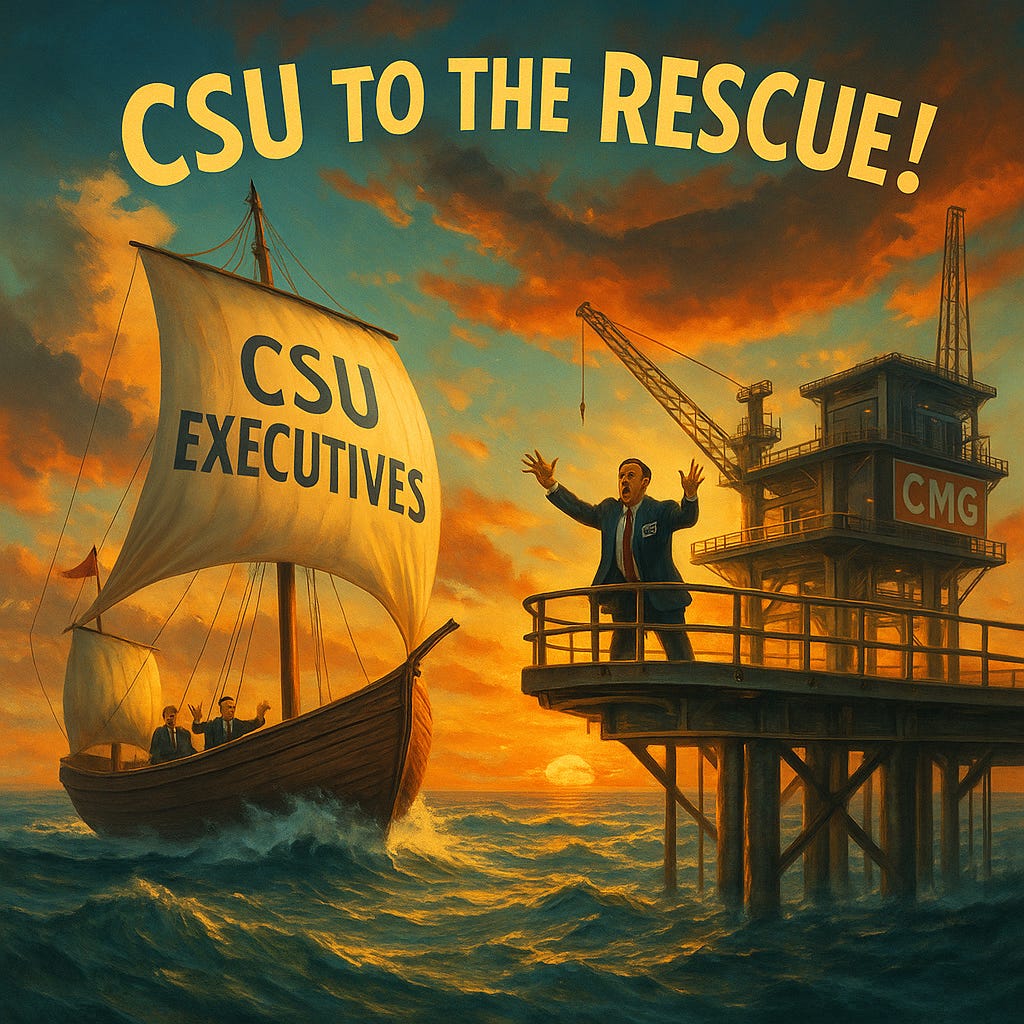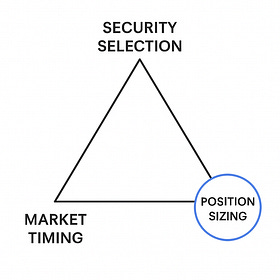My Fresh Thoughts on CMG’s Under-the-Radar Transformation (+New Data Points)
Does The Platform Finally Take Shape?
If you’re a longtime follower of Computer Modelling Group (CMG), the last few months may have felt... quiet. Too quiet, perhaps?
While some investors were growing impatient, refreshing the news feed for signs of life in the M&A pipeline, the company was apparently laying groundwork beneath the surface – slowly, methodically, and with a level of discipline that might frustrate fast-money types but intrigues long-term business observers.
Then, in quick succession, came the headlines.
On July 31st, CMG announced its third acquisition under CEO Pramod Jain: SeisWare International, a small but respected player in seismic interpretation software. Just a few days prior (July 28th), Jain had strengthened his leadership bench with the appointment of a new CFO, Vipin Khullar – an executive with Constellation Software pedigree. And before that, in early June, a partnership with Baker Hughes added strategic weight to CMG’s ambitions of offering end-to-end workflows across the upstream energy stack.
If you zoom out, you start to see the shape of something bigger forming, albeit slowly. This isn’t just a series of incremental moves. It’s an attempt to re-architect the entire company – from a one-product legacy software vendor to a multi-product compounder with acquisition DNA, recurring revenue heft, and a much more ambitious addressable market.
That doesn’t mean the path is smooth or guaranteed. But it does make CMG a much more interesting business to watch – and potentially own – than it was just a few years ago (which is why I’m an owner myself).
Earlier this week, I wrote the following in my half-year letter:
“Finally, Computer Modelling Group is set to report earnings in early August. The core business remains solid, and we continue to hope that another, hopefully smart, acquisition under the 'CMG 4.0' playbook will be announced in the near future.”
Funnily enough, just one day later, that’s exactly what happened.
Half-Year Investor Letter – July 2025
Let’s kick things off with a brief update before we dive into the more fundamental ideas. The portfolio has performed steadily during the first few months of its existence, with solid gains across several core holdings (especially Meta and IBKR), a few smaller positions that have started to show promise, and a few companies that are down in price since …
So what should we make of all this? Does the SeisWare acquisition move the needle? Is CMG actually evolving into a true platform business, or is this just a few clever bolt-ons dressed up with buzzwords? Are insiders aligned with shareholders? Can the M&A cadence realistically pick up pace – or are we dealing with a niche market that limits just how “serial” CMG’s acquisition ambitions can be?
These are the kinds of questions I’ll tackle in this post. Here’s what we’ll cover:
Why the SeisWare acquisition, while small in revenue terms, might be a bigger strategic signal than it appears
How CMG is building a differentiated seismic platform and evolving its M&A strategy to support margin and FCF growth
What the leadership shuffle reveals about the company’s cultural reboot and operational ambition
Whether the Constellation Software DNA at board and exec level is reshaping CMG into a “mini-CSU” – and whether that’s realistic
Why I still think CMG is underappreciated by the market – and what needs to happen next to change that
The best part is just ahead — unlock the full post to continue.
Investing is the one domain where better thinking compounds. If this intro gave you new insights, the full piece goes even deeper. A paid subscription is an investment in your decision-making process – and your returns.
Read the free deep dive on CMG here:
Why I’m Betting on This Stock in the Next Decade of Energy Transition
Picture this: a small Canadian software company, quietly churning out niche tools for oil and gas engineers, suddenly finds itself at a crossroads!
Disclaimer: I own CMG shares. The analysis presented in this blog may be flawed and/or critical information may have been overlooked. The content provided should be considered an educational resource and should not be construed as individualized investment advice, nor as a recommendation to buy or sell specific securities. I may own some of the securities discussed. The stocks, funds, and assets discussed are examples only and may not be appropriate for your individual circumstances. It is the responsibility of the reader to do their own due diligence before investing in any index fund, ETF, asset, or stock mentioned or before making any sell decisions. Also double-check if the comments made are accurate. You should always consult with a financial advisor before purchasing a specific stock and making decisions regarding your portfolio.




